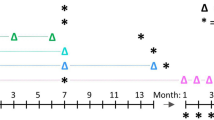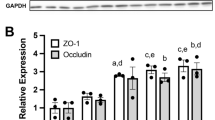Abstract
Somatic gene transfer to the pulmonary endothelium may be a useful strategy for modifying the phenotype of endothelium and/or vascular smooth muscle in disorders such as primary pulmonary hypertension, ARDS or pulmonary metastatic disease. Adenoviral (Ad) vectors, although highly efficient in liver gene transfer, have proven to be limited for pulmonary gene transfer with respect to efficiency, in part because of difficulty in assuring significant residence time in the lung and/or paucity of receptors for adenovirus on the endothelium. A recent study has shown that the use of a bispecific antibody to endothelial cells and Ad vectors efficiently redirects Ad vectors to pulmonary endothelium and improves gene expression in the lung. In this study, we report that pulmonary gene transfer by Ad vectors can also be improved significantly via the use of cationic liposomes. Preinjection of cationic liposomes followed by adenovirus led to a significant increase in the level of gene expression in the lung. The improvement in pulmonary gene transfer was associated with a decrease in the level of gene expression in the liver. Gene expression in the lung lasted for up to 2 weeks. This protocol, together with genetic modification of adenovirus, may prove to be useful for pulmonary gene transfer for the treatment of pulmonary diseases. This method may also be extended to pulmonary gene transfer using other types of viral vectors via vascular route.
This is a preview of subscription content, access via your institution
Access options
Subscribe to this journal
Receive 12 print issues and online access
$259.00 per year
only $21.58 per issue
Buy this article
- Purchase on Springer Link
- Instant access to full article PDF
Prices may be subject to local taxes which are calculated during checkout








Similar content being viewed by others
References
Benihoud K., Yeh P., Perricaudet M. . Adenovirus vectors for gene delivery Curr Opin Biotechnol 1999 10: 440 440
Connelly S. . Adenoviral vectors for liver-directed gene therapy Curr Opin Mol Ther 1999 1: 565 565
Krasnykh V.N., Douglas J.T., van Beusechem V.W. . Genetic targeting of adenoviral vectors Mol Ther 2000 1: 391 391
Krasnykh V. et al. Genetic targeting of an adenovirus vector via replacement of the fiber protein with the phage T4 fibritin J Virol 2001 75: 4176 4176
Shayakhmetov D.M., Papayannopoulou T., Stamatoyannopoulos G., Lieber A. . Efficient gene transfer into human CD34(+) cells by a retargeted adenovirus vector J Virol 2000 74: 2567 2567
Wickham T.J. et al. Targeted adenovirus gene transfer to endothelial and smooth muscle cells by using bispecific antibodies J Virol 1996 70: 6831 6831
Douglas J.T. et al. Targeted gene delivery by tropism-modified adenoviral vectors Nat Biotechnol 1996 14: 1548 1548
Reynolds P.N. et al. A targetable injectable adenoviral vector for selective gene delivery to pulmonary endothelium in vivo Mol Ther 2000 2: 562 562
Trepel M., Grifman M., Weitzman M.D., Pasqualini R. . Molecular adaptors for vascular-targeted adenoviral gene delivery Hum Gene Ther 2000 11: 1971 1971
Tan Y. et al. Sequential injection of cationic liposome and plasmid DNA effectively transfects the lung with minimal inflammatory toxicity Mol Ther 2001 3: 673 673
Hodgson C.P., Solaiman F. . Virosomes: cationic liposomes enhance retroviral transduction Nat Biotechnol 1996 14: 339 339
Fasbender A. et al. Complexes of adenovirus with polycationic polymers and cationic lipids increase the efficiency of gene transfer in vitro and in vivo J Biol Chem 1997 272: 6479 6479
Arcasoy S.M. et al. Polycations increase the efficiency of adenovirus-mediated gene transfer to epithelial and endothelial cells in vitro Gene Therapy 1997 4: 32 32
Qiu C., DeYoung M.B., Finn A., Dichek D.A. . Cationic liposomes enhance adenovirus entry via a pathway independent of the fiber receptor and alpha(v)-integrins Hum Gene Ther 1998 9: 507 507
Clark P.R. et al. Polycations and cationic lipids enhance adenovirus transduction and transgene expression in tumor cells Cancer Gene Ther 1999 6: 437 437
Chillon M., Lee J.H., Fasbender A., Welsh M.J. . Adenovirus complexed with polyethylene glycol and cationic lipid is shielded from neutralizing antibodies in vitro Gene Therapy 1998 5: 995 995
Freimark B.D. et al. Cationic lipids enhance cytokine and cell influx levels in the lung following administration of plasmid: cationic lipid complexes J Immunol 1998 160: 4580 4580
Li S. et al. Effect of immune response on gene transfer to the lung via systemic administration of cationic lipidic vectors Am J Physiol 1999 276: 796 796
Yew N.S. et al. Contribution of plasmid DNA to inflammation in the lung after administration of cationic lipid:pDNA complexes Hum Gene Ther 1999 10: 223 223
Lanuti M. et al. Cationic lipid:bacterial DNA complexes elicit adaptive cellular immunity in murine intraperitoneal tumor models Cancer Res 2000 60: 2955 2955
Song Y.K., Liu F., Liu D. . Enhanced gene expression in mouse lung by prolonging the retention time of intravenously injected plasmid DNA Gene Therapy 1998 5: 1531 1531
Acknowledgements
This work was supported by NIH grants HL63080 (to S Li), HL32154 and GM53789 (to B Pitt), and HL66949 and AR62225 (to P Robbins).
Author information
Authors and Affiliations
Rights and permissions
About this article
Cite this article
Ma, Z., Mi, Z., Wilson, A. et al. Redirecting adenovirus to pulmonary endothelium by cationic liposomes. Gene Ther 9, 176–182 (2002). https://doi.org/10.1038/sj.gt.3301636
Received:
Accepted:
Published:
Issue Date:
DOI: https://doi.org/10.1038/sj.gt.3301636
Keywords
This article is cited by
-
Current advances in developing cationic lipid-based nanoparticles as a vehicle for improving adenoviral gene delivery
Journal of Pharmaceutical Investigation (2016)
-
Systemically administered liposome-encapsulated Ad-PEDF potentiates the anti-cancer effects in mouse lung metastasis melanoma
Journal of Translational Medicine (2013)
-
Treating metastatic cancer with nanotechnology
Nature Reviews Cancer (2012)
-
Co-delivery of Adenovirus and Carmustine by Anionic Liposomes with Synergistic Anti-tumor Effects
Pharmaceutical Research (2012)
-
Anti-tumor effect of adenovirus-mediated gene transfer of pigment epithelium-derived factor on mouse B16-F10 melanoma
Journal of Experimental & Clinical Cancer Research (2009)



